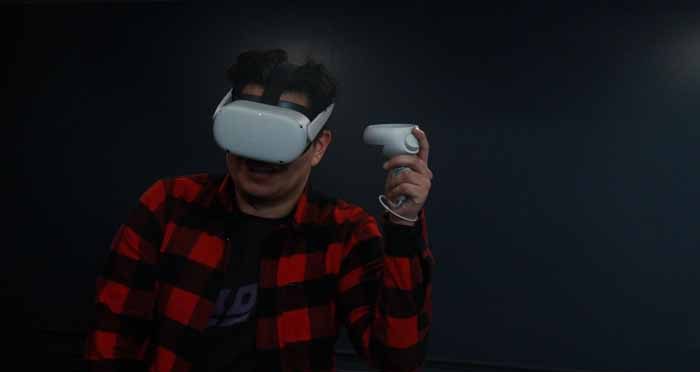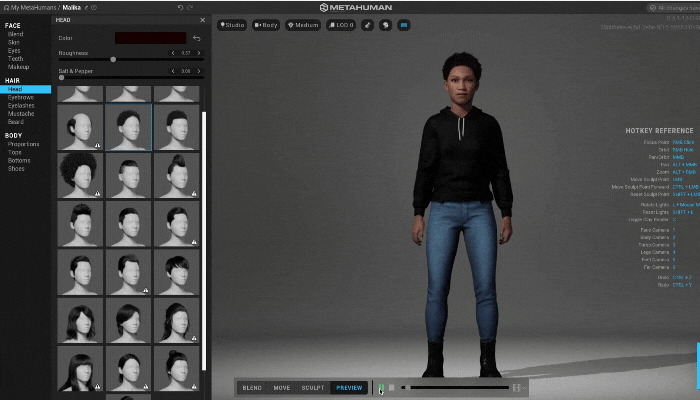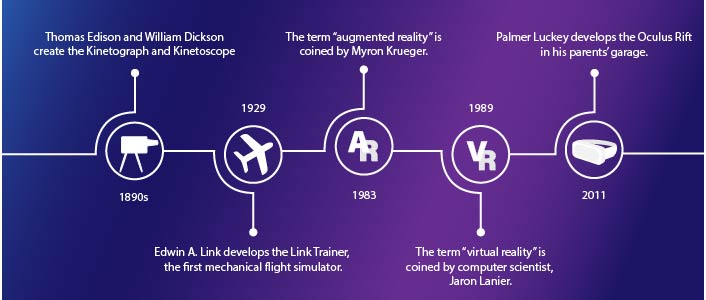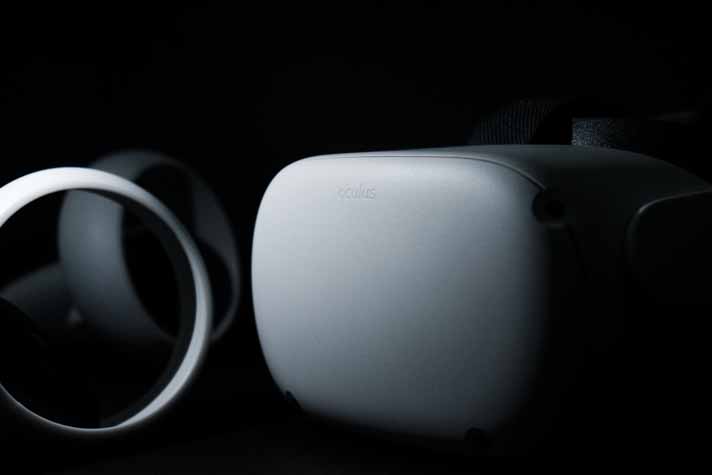Listen to the article:
Since the beginning of the COVID-19 pandemic, billions of people around the world have undergone tremendous lifestyle shifts and are effectively turning to technology to continue their day-to-day lives. Programs like Microsoft Teams and Zoom replaced physical boardrooms for business meetings, while online video games, like Fortnite and Roblox, became the virtual stage for concerts.
Together, we’ve witnessed technology progress from what was developed in the 1990s (referred to as Web 1.0) to the current state of the internet (Web 2.0). The internet is only going to become a bigger part of our lives as it grows and expands, pushing the limits of creativity and innovation.
One of those innovations is the booming idea of the Metaverse — a virtual world that combines digital aspects with our physical reality.
Defining the Metaverse
The idea of the Metaverse has been around for years. Creatives have been exploring it through various entertainment mediums like movies, books, and video games. But it wasn’t until 2021 that the topic started to catch people’s attention on a global scale.
It seems that the concept behind the Metaverse doesn’t yet have a concrete definition since everywhere you look, and everyone you talk to, has a different opinion on what it is.
“The concept is too vague,” said Fabio Hofnik, a business developer with Bit Space Development who holds interest in the Metaverse concept. “Depending on the company and their approach, they’re going to use it differently.”
Hofnik’s role at Bit Space Development includes working with different companies to help them understand virtual reality (VR) and the Metaverse, but he doesn’t think that the Metaverse idea is narrow enough for people to completely grasp what it’s going to be.
The most popular description of the concept labels the Metaverse as an online, virtual hub where people can work, play, and socialize, which sounds a lot like our current understanding of the internet.
To understand the concept a little more, people can look to the hit novel, Snow Crash by Neal Stephenson and the book and movie Ready Player One. While the term “Metaverse” comes from Stephenson’s sci-fi novel, both titles are stellar examples that help put the concept into perspective and demonstrate the overall goal of the Metaverse, which is to be a virtual world, somewhat replicating our own, where you can interact with other users near and far from you.
Consider how the pandemic has allowed millions of people to go to work by sitting in their living rooms. All they needed to do was open a video conference with their coworkers, who were, in turn, sitting in their own homes.
If we replace Zoom with the Metaverse in that scene, you can imagine waking up for another day of work, but instead of a video conference with your coworkers, you put on a pair of glasses that pull you into a virtual office where everyone, in the form of avatars, is sitting around a desk ready to start the morning meeting.
The Metaverse will be a world where you can theoretically walk through a virtual space and try on clothes to see how they look before buying them, or visit your friend’s social space and sit on their couch.
It’s this type of socialization that causes many institutions to refer to it as the next generation of the internet.
Key Contributors to the Metaverse
The Metaverse became a hot topic very quickly, with some of the largest game and tech companies latching onto the idea, wanting to claim a stake in its creation. Arguably the most outspoken of them all is Meta, previously known as Facebook before its rebranding on October 28, 2021.
Meta
Mark Zuckerberg, the CEO and co-founder of Meta, jumped on the Metaverse train in October 2021, publicly positioning himself and his company as leaders in the Metaverse creation, describing it as “the successor to the mobile internet.”
Despite Zuckerberg taking his place near the top of the contributor list, it doesn’t look like Meta is seeking sole proprietorship, which just makes sense. When it comes to an idea that is this colossal in scale, it seems unlikely that the Metaverse will belong to a single company, and more so that it will be a project requiring multiple stakeholders coming together.
“The Metaverse is a vision that spans many companies — the whole industry,” Zuckerberg said during an interview with The Verge, claiming that it will be “the holy grail of social interactions.”
According to a Forbes article from October 2021, and Facebook’s business site, prior to its Meta rebrand, Facebook was planning to create 10,000 “highly-skilled jobs” within the European Union that would contribute to building the Metaverse.
The social media company also announced that it would be contributing an initial investment of $50 million to start building the virtual world, with an estimated timeline of 15 years to get it fully complete.
Meta also formed partnerships with groups falling under the non-profit, government, and cultural sectors: Colorintech from the UK, Alte Nationalgalerie from Germany, and Peres Center for Peace and Innovation in Israel. By bringing these stakeholders on board, Meta found a way to bridge the gap between visual arts and “extended reality” (XR), which, according to Forbes, is an umbrella term used to describe immersive technologies that merge the physical and virtual worlds.
Aside from Meta, there are big players who arguably have a leg up on the social media company, having established a Metaverse-like platform in the world of video games.
Roblox
Roblox — a game platform that allows individual developers to create their own games for other people to play — might be the closest thing we have to a Metaverse at this stage.
“Just look at Roblox,” said Jonathan Lê, the Training Director at New Media Manitoba, a non-profit association that focuses on supporting Manitoba’s Interactive Digital Media industry. “As far as I’m concerned – the model that Roblox has created in regards to currency, socialization and gamification – Roblox has it figured out.”
In a blog post from Roblox, posted on September 2, 2021, the company states how its belief is that the Metaverse is something for everyone and that its vision is to “create a platform that allows immersive co-experiences where people can come together within millions of 3D experiences to learn, work, play, create, and socialize.”
Roblox says it’s trying to build “an engaging community where people can share rich experiences and form real and lasting connections with other people around the world.”
According to a Seeking Alpha article written by Khen Elazar, Roblox is already in the stages of building a Metaverse, but on the side that leans more towards gaming.
“It already has a developer platform, it has the experience and above all, it has an existing user base with daily active users approaching 50M people worldwide and still growing at a double digits rate. This existing platform, ecosystem, and client base will be the building blocks of Roblox Metaverse vision,” wrote Elazar.
However, Roblox isn’t the only platform that already has Metaverse-like elements.
Epic Games (Epic) and Fortnite
When we look at the Metaverse in video games, the strongest example is more likely Fortnite from Epic Games.
Fortnite was initially launched in 2017 with the Save The World mode as an early access title, and its Battle Royale mode followed months after. Millions of players were attracted to the game for its Battle Royale mode, and the company started to add additional social features like voice chat and dancing.
What started as a shooter game has turned into such a grand interactive experience that it’s in line with Roblox, as the closest thing to the Metaverse in the sense of video games.
According to an article from The New York Times, Matthew Weissinger, the VP of Marketing at Epic, said, “It’s more than a game. We’re building this thing called the Metaverse – a social place.”
During the COVID-19 pandemic, Fortnite found an opportunity to bring more people together by hosting virtual, in-game concerts — two of which, were held by Marshmello, an American DJ, and Travis Scott, an American rapper.
Kevin Rodriguez, a Media Production student at Red River College Polytechnic, has had his fair share of VR experiences, playing games like Fortnite with his friends and cousins. He also attended one of the virtual concerts that were held in-game during the earlier days of the COVID-19 pandemic.

“The way they modelled the whole experience was interesting because you’re not just standing in a pit, staring at a screen,” said Rodriguez. “You’re moving through environments that relate to the song.”
In April 2021, Epic Games announced its $1 billion funding contribution to building the Metaverse, saying that it’s been part of their long-term vision. Ted Sweeney, the CEO of Epic, thanked several new investors — including Sony Group Corporation and Baillie Gifford — and existing investors who are supporting the company along the way.
Recently, Rodriguez purchased an Oculus Quest 2, and while he thinks VR is a fun pastime, the idea of a Metaverse poses too many concerns — specifically with avatar-to-avatar interactions — for him to get too excited.
MetaHuman Creator and Unreal Engine
Unreal Engine is a game engine that was developed by Epic Games in 1998 and has been used to create several popular video games, including Fortnite, Gears 5, and both Little Nightmares games.
In the Metaverse, people will be interacting with each other through their avatars, which don’t have to necessarily look like their real selves. Programs, like MetaHuman Creator, allow users to get creative with constructing their virtual selves.

Users can create their avatar to look identical to themselves, from matching their real-world complexion to the style of their clothing. However, they can also make their avatars animated robots or purple-skinned aliens.
To Rodriguez, this is a cause for some hesitation.
“I feel that with virtual reality, you have a better chance at hiding your true intentions. Like, you can make your avatar but are you going to be genuine with what you look like?”
If you look at video game platforms with avatars, people don’t tend to create avatars that resemble themselves.
With the ability to create an avatar that looks however users want it to look, there is potential for a lot of misrepresentation and a lack of honesty and transparency — leaving room for an increase in “catfishing.”
Catfishing means using fake images and information to create an untrue identity/persona, and people can use it for several reasons, including luring someone into a relationship, harassing someone who has blocked them, or simply to mask their insecurities.
There’s also the point of self-expression and confidence that makes the avatar aspect of the Metaverse appealing.
“Reinvention of oneself. You can be whoever you want to be. You can control your image to a point and broadcast that image, this is the next step,” said Rodriguez. “Yeah, you’re interacting with people, but it’s not the true reality.”
As it is now, you can’t transfer an avatar between platforms, so users must use MetaHuman Creator with Unreal Engine projects. But with Epic’s expected contribution in the Metaverse, it’s likely that we’ll see Unreal Engine and its avatar creator become key aspects too — possibly allowing for cross-platform use.
Exploring the History of Virtual Reality
Like avatars, virtual reality is also rapidly changing. There are two different types of VR: psychological and technological.
Psychological VR is the emulation of a situation that we understand and perceive to be real, whereas technological VR is a digital reality that can be explored and experienced by a person in our natural world.
When we look at the timeline of VR, the very beginning started in the 1890s, when Thomas Edison and William Dickson created the Kinetograph and Kinetoscope – the first single-person film experience. Then, in 1929, Edwin A. Link developed the first mechanical flight simulator, the Link Trainer and Pilot Maker.
In 1983 and 1989, the terms artificial reality and virtual reality were coined by Myron Krueger and computer scientist John Lanier respectively, but it wasn’t until 2011 that VR became what we know it to be today.

In 2011, Palmer Luckey developed the Oculus Rift, a VR headset, in his parents’ garage. Oculus was acquired by Facebook in 2014. Facebook/Meta has gone on to expand on the technology, creating new headsets, the latest being the Oculus Quest 2.
VR isn’t one specific thing; it branches out into three pillars: collaborative, non-immersive, and fully immersive.
Imagine being a medical student, standing in a room with your peers, with the ability to perform laparoscopic surgery in a virtual emergency room, or an architect who can walk through the blueprints of a high-rise currently under construction from the safety of a boardroom — that’s collaborative VR.
“I truly believe that this virtual space is for education and work,” said Hofnik. “In an architecture class, you can bring in a 3D model of a building. That’s magical and way better than a PowerPoint on a screen.”
Non–immersive VR focuses on the 3D content displayed on a flat screen, think on-screen flight simulators, something that’s simply for viewing.
Fully-immersive VR refers to when the visuals and audio move with the user, and objects can be manipulated by the viewer, basically how people interact with VR headsets and controllers today. The Metaverse will be primarily created with the latter option, but likely to include aspects of each.
VR is significant when it comes to building the Metaverse, but there is more to the Metaverse’s creation than just that.
Constructing the Metaverse
A lot of time, effort, and money goes into creating virtual worlds and the Metaverse will be no exception. It will require enterprise hardware and technologies like artificial intelligence (AI), VR, augmented reality (AR), and blockchains — publicly shared ledgers used to track assets and record transactions for businesses.
If Zuckerberg’s prediction rings true, and the Metaverse won’t just be one unique platform, but multiple platforms, there will be different sectors with different purposes. It’s going to be important that people’s virtual assets are made easily transferable between all sectors of the Metaverse.
Currency and taxation
Another important aspect of the Metaverse is going to be its currency.
“As it is now, it’s common for video game platforms to have their own in-game currency, and who is to say that doesn’t carry over to the Metaverse?” said Hofnik.
Today, we already have different NFTs, non-fungible tokens, and several different digital currencies, so there will need to be a way to make cryptocurrencies transferable from one space in the Metaverse to another in order to keep it a global social hub that’s free and fair to everyone.
However, in The Metaverse: Prepare For the Next Big Thing!, written by Terry Winters, Winters talks about how the cryptocurrency that we use now, like Bitcoin and Ethereum, might not be the same currencies used in the Metaverse.

Will there be restrictions on which cryptocurrencies will be a part of the Metaverse, and what they can purchase? Will our real-world currencies be used at all? There are a number of unanswered questions that need to be addressed; for example, could the Metaverse turn into a premium platform or service, limited to individuals who own a specific cryptocurrency or amount?
But questions about the economics of the Metaverse are just the beginning.
Governing, laws, and security
Governance is another area with lots of unanswered questions. If the Metaverse is a platform created by several contributors, who is in charge? Governance and regulation, including policies around behaviour and security, still needs to be worked out. With the idea of a Metaverse, the list of possible problems is long, especially considering how many security issues our current internet has already experienced.
In December of 2021, Meta opened Horizon Worlds, the company’s VR social platform, to people in Canada and the US above the age of 18.
Only two months after launch, Meta began rolling out changes to the platform, adding a “personal boundary” to avatars in an attempt to stop any harassment.
According to an article from the Daily Mail, a British woman was virtually groped less than one minute after entering Facebook/Meta’s online Metaverse, and the only way to take control was to tear her headset off.
An article published by The Verge, states that the personal boundary will put up an invisible barrier that prevents avatars from getting too close to one another and will make their hands disappear, although, people will still be able to give high fives and fist bumps.
“This new digitally mediated innovation civilization, though, will not reach its full potential, and may actually encounter existential problems,” said George S. Takach, senior partner at McCarthy-Tetrault, in an article posted on Infosecurity Group, “unless we first fix some of the major shortcomings of our current digital ecosystem.”
Takach’s post goes on to discuss the need for legal ground rules on artificial intelligence (AI), seeing as the Metaverse will be built on top of it, as well as VR and AR.
Alongside legal ground rules, there will be a need for a global legal framework, which is one of the bigger challenges the Metaverse will have to face.
Potential Benefits and Downfalls
Disabilities, accessibility, and health
The Metaverse brings the possibility of offering new experiences to people around the globe, and there are obvious — and not so obvious — pros and cons to the Metaverse. One area of interest is accessibility.
According to the Bureau of Internet Accessibility, developments in VR are coming to light at the same time that conversations surrounding disabilities and accessibility are gaining more attention. Since the goal of VR is to enhance experiences for people, we know virtual reality will play a huge role in the Metaverse. Is it too soon to question whether that goal applies to everyone?
“The web is designed for able-bodied people,” said Lê, “but, I think there will be champions — companies that will make that investment to make the world more inclusive.”
Making the Metaverse accessible to people with disabilities should be high on the list of Metaverse priorities, considering the vast potential we have using virtual and augmented realities.
Hofnik says that VR empowers people. He has done some thinking about how it can remove barriers for people with physical disabilities and restrictions, “If you can’t travel, well in VR you can.”

An article by Scientific American talks about how VR is commonly used to aid with exposure therapy, defining it as “a treatment for anxiety disorders in which patients are exposed to anxiety-inducing stimuli in a safe, controlled environment, eventually learning that the “threats” they’re worried about are not actually very dangerous.”
The article also says, “psychological research is pioneering VR to diagnose and treat medical conditions from social anxiety to chronic pain to Alzheimer’s Disease.”
While it’s evident that there are benefits of using VR for a person’s physical health, when it comes to mental and emotional health, there may be some things to consider.
The Technologcial Effects on Society
During the pandemic, people wondered whether the lack of in-person interaction was having a negative effect on children’s social development, and people’s overall social skills — is it possible that the Metaverse will have a negative effect on the same skills, despite it being a platform to connect people?
In an article from VR Focus writer, Callum Moates wrote, “Due to the fact that VR is so immersive and the stimulus on the brain is heightened due to it being a simulation, the possibility of getting addicted does increase.”
Moates continued, stating, “Users can become isolated and dependent on the use of VR. They can become antisocial and lose basic social skills, which can then form into social anxiety and other mental health problems.”
This is something we need to be wary of as we head toward the Metaverse. While the Metaverse will help us connect with people in a virtual face-to-face environment, it’s not the same as having a true, physical face-to-face interaction.
There’s Still a Long Way to Go
While Zuckerberg says his goal for the Metaverse is to have it be a hybrid between social platforms and an environment that you’re embedded in, it’s going to be more than just that, and some applications might be more beneficial than others.
As it is now, there are still several unknowns surrounding the Metaverse but it’s something to stay updated on as we’re likely to see its emergence within the next decade.
A lot of work is required to bring the Metaverse to its full potential. Ensuring that when it does arrive, it does more good than harm is going to take a collection of big players sitting down, looking at every piece of the puzzle, listening to diverse voices, and learning from our collective history in the online space.
